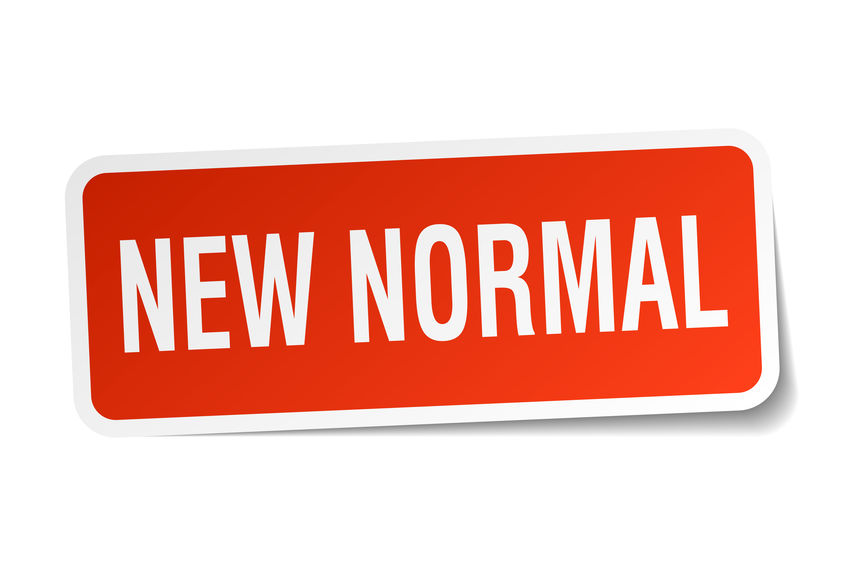“The New Normal” – What are you expecting?
“We aren’t going to return to ‘normal’ – there will be a ‘new normal’” is a phrase commonly heard these days – from news media, economic gurus and business consultants. But what do they mean? What do you (or I) mean when we use the phrase “new normal?” I don’t think most of us really know. It is a phrase we are used to using, but rarely define.
What is ‘Normal’ Anyway?
We need to start by asking ourselves, “What does ‘normal’ mean?” What do we expect when we “just want things to get back to normal?” It’s a word with many synonyms: regular, expected, usual, typical, common, frequently occurring.
What we are really saying, when we talk or think about wanting things to be normal, is that we want daily life to be as we have come to expect it to be. We want the sun to come up in the morning, and go down in the evening. We want to have a regular schedule in place – to go to work, do our job, come home, have dinner, and do whatever we do in the evening. We want to do something fun on the weekend and we want to get paid every other week, like we have for the past X number of years.
The Problem of Wanting Things to Be Normal
One problem is: change is a core component of life. Yes, the sun goes up and down every day, but the timing changes throughout the year. And the time of sunrise and sunset differ depending where you are – Alaska or Arizona; at the top of a peak or in the valley between mountains.
A second challenge is: what is ‘normal’ differs depending on the person, place and time. Normal for a child raised in a poor family in the developing world is different from normal for a child raised in an upper middle-class family in the U.S. suburbs. What was typical for a family’s daily experience during the Great Depression, the Dust Bowl, or WWII was significantly different than the same family’s experience during the post WWII economic boom. Or less dramatically, what is ‘normal’ weather for this time of year varies depending whether you are in Kansas, Florida, or northern Canada.
The point is: we need to define what we mean by normal before we can talk about “returning to normal.” What have we come to expect to be usual or typical for our daily lives? What did “business as usual” really look like? I would encourage you to take a few moments to reflect, and possibly even jot down a few notes in response to these questions, for they will shape your expectations for the future.
Returning to Normal or Moving to a New Normal?
Some people want to “get back to normal” – the way things were before the pandemic and quarantine upended our rhythms and schedules. They liked the way their life was (perhaps even more so after experiencing extreme disruption).
There are a set of key questions we should ask ourselves:
- What, foundationally, has changed?
- What essentially remains the same (although it may look slightly different than before)?
- How do these factors impact what I should expect in the near-term future?
We can (and probably, should) apply these questions to different areas of our lives: our work / business, our family (nuclear and extended), our social context (friends, community).
No Easy Answers
Unfortunately, I don’t have any easy answers; and I don’t think right now there are any. Why? Because life’s circumstances are highly unpredictable, especially right now. We like predictability because it makes it easier for us to plan ahead. Daily life takes less effort when we know what to expect – in contrast to the amount of mental and emotional energy required when we have to make numerous decisions each day about seemingly little things (what/where to eat, going to the store when its open, getting your hair cut, etc.).
One strategy that can help reduce your stress when life is unpredictable – structure yourself and your day as much as possible. Eat the same thing for breakfast, make your lunch to take to work, get up and start work the same time every day (especially if you are working from home). Add some structures and routines to your day to reduce the number of decisions you have to make.
More importantly, however, take some time to think through your expectations of “the way things should be” and see if they match the reality of the circumstances around you. If not, you may want to consider revising your expectations (at least for now – until “things get back to normal” or you better understand what your “new normal” is). As Carey Nieuwhof has stated, “It’s hard to go back to normal when normal disappeared.”
Tags: change, COVID-19, new normalCategories Perseverance, Questions, Work

